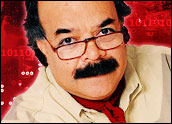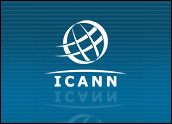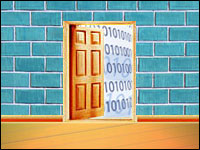
All over the world, with so many different meanings and perceptions of the word “branding,” it appears that it has lost its true meaning; the terminology is more like a walk through a museum with a glorious past.
Loose words like “economy” carry different meanings that speak differently to different people. To some, economy may refer to money, while to others, it means jobs; whereas for some, it’s the thing causing climate change. Hold it right there.
Branding gets even more adventurous. It can mean anything from having a business card with psychedelic logo all the way to the polishing of doorknobs to improve an image, while to others it’s about getting ahead of the economy. So what’s the difference between branding and economy? Now these are the terminology confusions that call for candid discussions.
Not the Same
Branding was once a very noble profession during the last century, but today, it is mostly entangled with general advertising and is losing its power and message. As long as anyone can claim to be an instant master of this art, very little can be said about its integrity.
Many decades ago, ad agencies mastered the craft to entice, hunt and capture customers. This century, the search engines offering brand-new tools that empower the customers to hunt for the best deals are making the traditional branding craft almost obsolete.
The search engine has made all deal options so easily accessible that customers can stalk around the globe 24/7 like predators, calling the shots while zeroing in on their most desired purchases. As a result, traditional advertising has fallen upon deaf ears while branding entrapped into fancy graphic works has become an overly expensive redundancy. Customers no longer want to be dragged to what sellers want them to buy; they are now masters of their own domain.
The Abundance Problem
This alone is a massive paradigm shift, and requires a brand-new thought process. Price, quality and value are driving customer behavior and bottom-line issues, persuasive ads were great when things were scarce, and today, in the age of super abundance, no one is waiting anxiously for the next big annual catalog with a lineup of new products.
Since the world is a parade of exotic things ’round the clock, who needs it? This change of buying habits has created the vacuum in all of the last century media.
Most business are overly cluttered with oversold graphics and are now expecting miracles to happen to their old-fashioned branding solutions. Most of today’s brand name identities are already stuck in an illusionary fame without any real ownership, basically in oblivion.
New Agency Role
The new role of the ad agencies is to become the risk-sharing partners in the projects and navigate the project with full share of responsibilities like architects delivering a standing structure and not just a fancy drawing. They will have to create and deliver brand name assets and not just transient logos. The last-century model of commission based on expenditure should be replaced by risk and rewards.
Unfortunately, most graphic mentality branding shops reject this notion while some new ones are taking the risk and sticking their neck out on performance-based campaigns. Entirely new types of services would emerge if the emerging future of advertising was re-captured, re-branded and re-named, as currently the term “advertising” is more of a liability.
Most businesses are expecting that a mass-media driven approach will solve all the image and identity issues. Always-on, 24/7 broadcasts are in, and prime time is now no time at all. The centrality of the TV in the living room has now shifted to mobile receptacles nicely snuggled in hip pockets.
New Media, New Models
The same morning paper that once set the daily agenda now stays folded for days. The current mobile society has turned the tables, making TV and print highly ineffective and expensive. The new role of branding agencies is to reinvent new media and nurture a deeper understanding of online methods. Long gone are the days where credentials of cut-and-paste logos would create high profile admen. Today, it’s all about IT and a greater deal of technological fusion. As IT now rules the new media, India will now rule the global advertising hub through worldwide marketing and innovative online cyber-services.
Before applying the word “branding” as a cure to all problems, a visit to its history and its possible future is a must. Advertising businesses, packaging and branding services, newspapers and TV will never die; while they have served humanity extremely well, they are most certainly well-placed and respected in the archives of corporate history. However, the new surges, driven by the most adventurous cybernauts have taken over, just like the earlier cycle of the 1900s, when the newspapers were the driving force; today it’s the search engines.
Tomorrow, it may be another new front. Look at the last century’s trends and study the peaks of branding during its five major cycles. Figure out your game plans on new platforms in this century. The more you study the online industry, the more you realize that how little even the online industry itself knows about what’s to come. A sudden drop in online advertising is also on the horizon. Nevertheless, a great future for smart marketing with guaranteed results lies ahead.
This is when the branding companies scratch their heads and start thinking.
Naseem Javed is recognized as a world authority on corporate image and global cyber-branding. Author of Naming for Power, he introduced the Laws of Corporate Naming in the 1980s and also foundedABC Namebank, a consultancy established in New York and Toronto a quarter century ago. He can be reached at[email protected].












































Social Media
See all Social Media